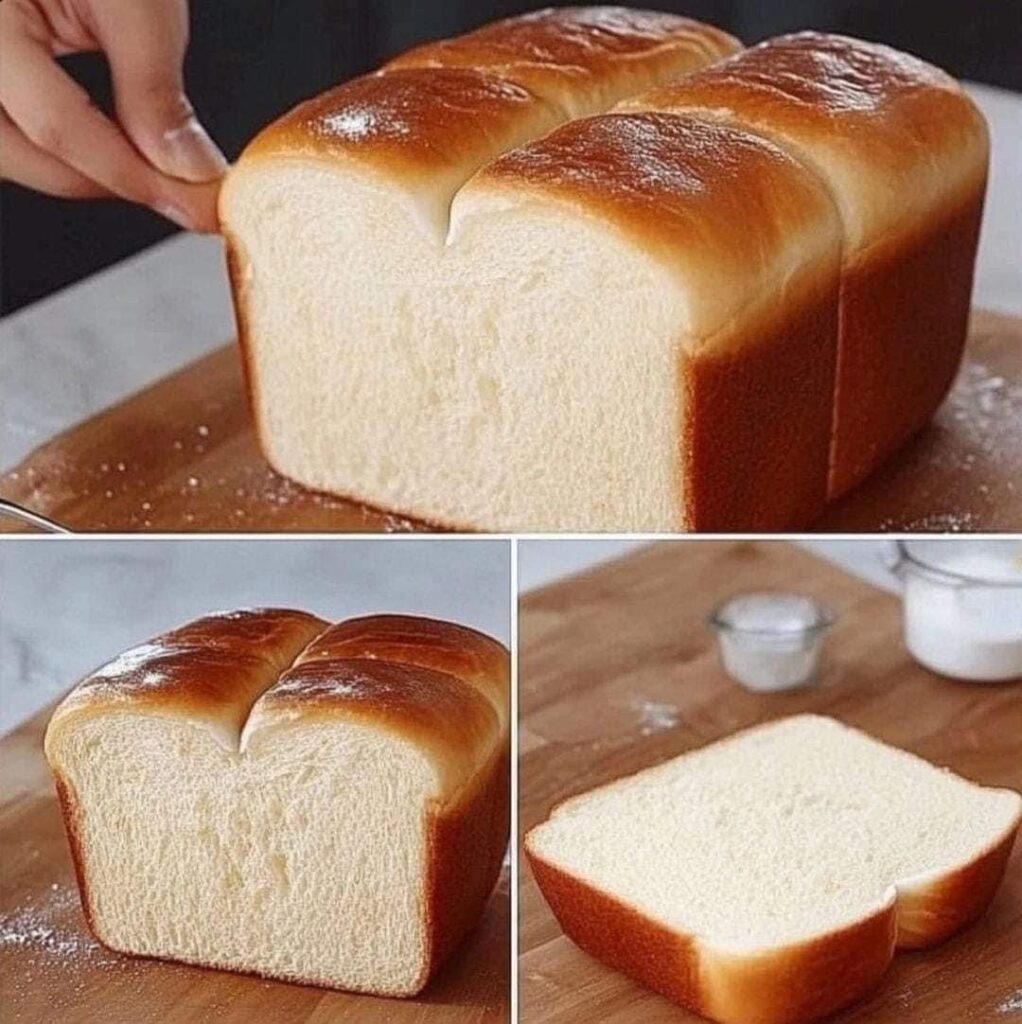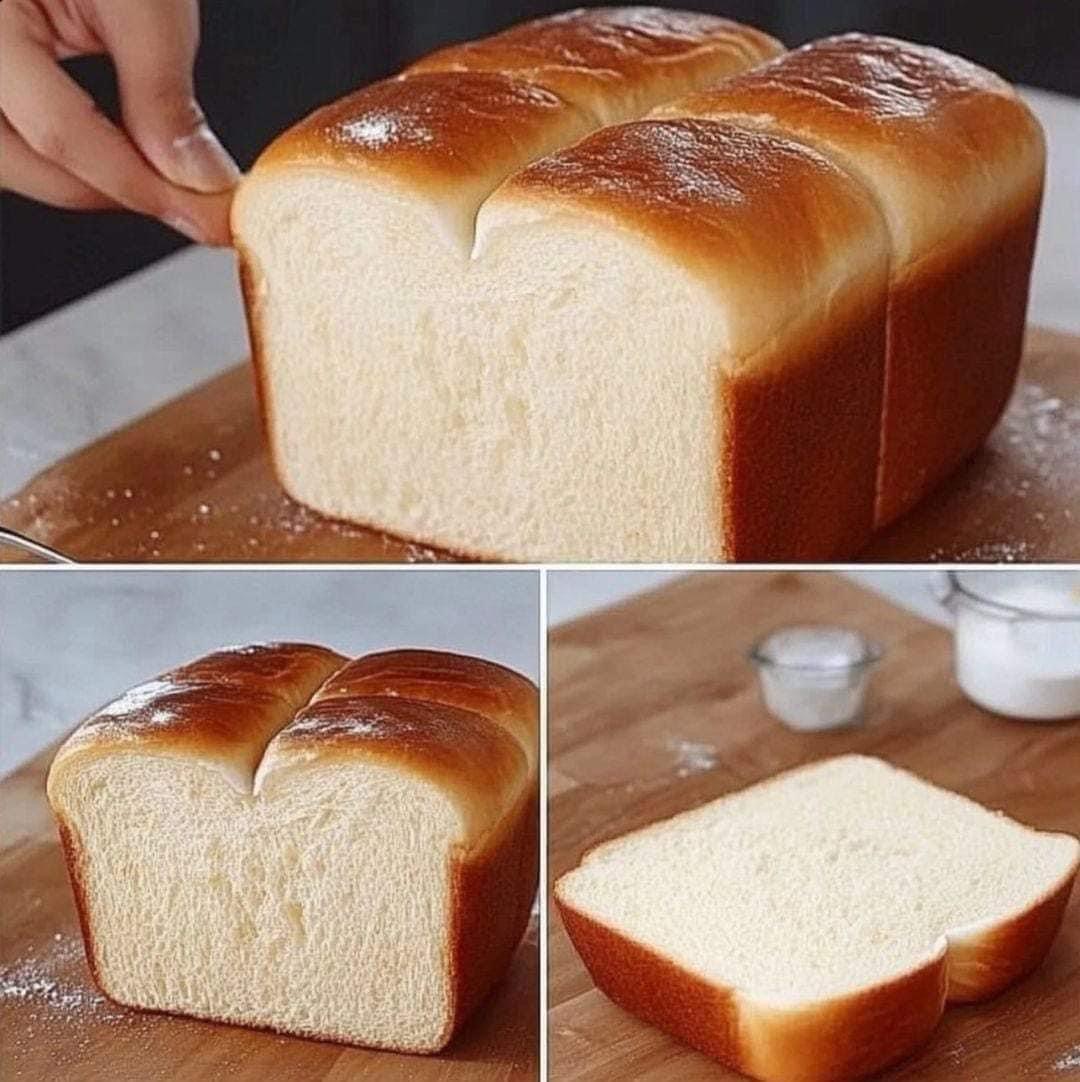Japanese milk bread

Introduction
Soft, fluffy, and slightly sweet, Japanese milk bread is a staple for bread lovers worldwide. This bread is famous for its cloud-like texture and delicate flavor, making it perfect for sandwiches, toast, or enjoying plain. The secret lies in the Tangzhong method, a cooked flour paste that keeps the bread moist and fresh for days.
History
Milk bread, or Shokupan, originated in Japan during the late 19th century when Western-style bread was introduced. Its unique softness and slight sweetness were adapted to suit Japanese tastes, with innovations like the Tangzhong method making it lighter and longer-lasting. Today, it’s a household favorite in Japan and beyond, celebrated for its versatile uses.
Ingredients
For Tangzhong:
- 2 tbsp (30g) bread flour
- 1/2 cup (120ml) water
- 1/2 cup (120ml) milk
For Dough:
- 3 cups (400g) bread flour
- 3 tbsp (40g) sugar
- 1 tsp salt
- 2 1/4 tsp (7g) instant yeast
- 1/2 cup (120ml) warm milk
- 1 large egg
- 4 tbsp (60g) unsalted butter, softened
Instructions
Step 1: Prepare Tangzhong
- In a small saucepan, mix flour, water, and milk until smooth.
- Cook over medium heat, stirring constantly, until thickened into a paste (about 3-5 minutes). Let it cool.
Step 2: Make the Dough
- In a mixing bowl, combine bread flour, sugar, salt, and yeast.
- Add the cooled Tangzhong, warm milk, and egg. Mix until a sticky dough forms.
- Knead the dough (by hand or mixer) for about 10 minutes until smooth and elastic.
- Gradually incorporate softened butter, kneading until fully absorbed.
Step 3: First Rise
- Place the dough in a greased bowl, cover, and let it rise in a warm place for 1-1.5 hours or until doubled in size.
Step 4: Shape the Dough
- Punch down the dough and divide it into 3 equal portions.
- Shape each portion into a ball or rectangle, roll it out, and fold into thirds. Roll it into a cylinder.
- Arrange the cylinders in a greased loaf pan.
Step 5: Second Rise
- Cover and let the dough rise again until it fills 80% of the pan (about 45 minutes).
Step 6: Bake
- Preheat the oven to 350°F (175°C).
- Brush the top with milk or an egg wash for a shiny finish.
- Bake for 25-30 minutes or until golden brown.
- Let it cool before slicing.
Methods and Techniques
- Tangzhong Method: Creates a gelatinized paste that traps moisture, ensuring a soft, airy crumb.
- Kneading: Proper kneading develops gluten, crucial for the bread’s structure and elasticity.
- Shaping: Rolling and folding create the classic pillowy look and prevent uneven rising.
Benefits
- Longevity: Stays soft and fresh longer due to the Tangzhong method.
- Versatility: Perfect for sweet or savory recipes.
- Rich Nutrients: Provides carbohydrates for energy and protein from milk and eggs.
Nutrition (per slice)
- Calories: 120
- Protein: 4g
- Carbs: 20g
- Fat: 3g
- Fiber: 1g
Formation
This bread forms beautifully thanks to its enriched dough, creating an even crumb structure and glossy crust. Shaping the dough into three sections gives it a distinctive pull-apart texture.
Conclusion
Japanese milk bread is a labor of love, offering unmatched softness and versatility. Its rich history and satisfying results make it a favorite among bread lovers.
Lovers’ Notes
Milk bread enthusiasts adore its pillowy texture and delicate flavor. It pairs beautifully with butter, jam, or as a base for French toast and sandwiches.
Would you like me to adjust the recipe for specific dietary preferences or provide tips for substitutions
